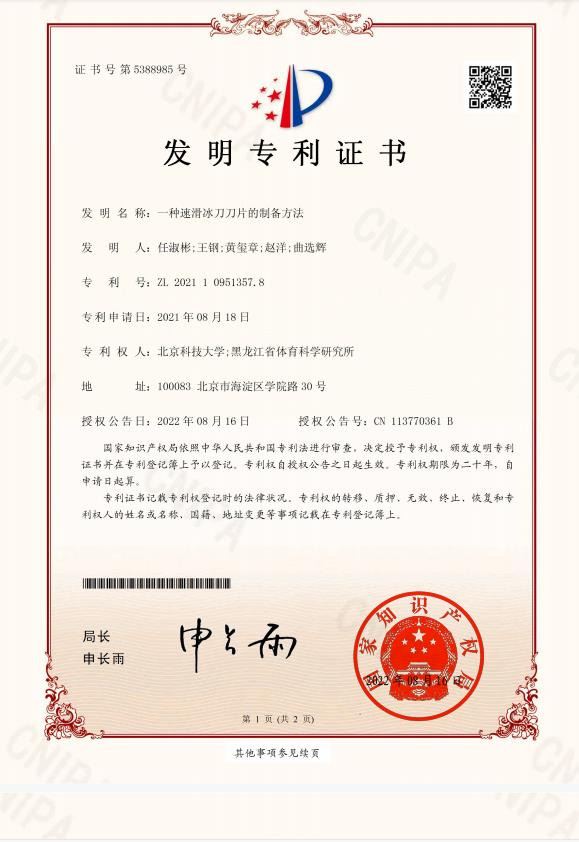一种高性能速滑冰刀刀片材料的制备方法,属于金属材料领域。首先采用真空气雾化制粉技术制备质量比为C:1.20‑1.30%;Si:0.3‑0.5%;Mn:0.65‑1.00%;Cr:4.8‑5.2%;Mo:4.8‑5.2%;V:4.8‑5.2%;Co:4.8‑5.2%;W:4.8‑5.2%;O≤0.005%;N:0.03‑0.05%,余量为Fe的球形金属粉末,其中粉末的粒度范围为10‑250μm微米,然后进行热等静压烧结致密化得到热等静压锭,再将热等静压锭进行锻造开坯和热轧,得到一定厚度的板坯,之后将板坯与相同厚度的刀背材料进行焊接得到双金属刀片毛坯,再进行性能热处理,之后将热处理后的板坯加工成所需要尺寸的半成品双金属刀片,最后对该双金属刀片的刀刃部分进行辉光粒子氮化处理,在表面形成厚度为0.11~0.12mm的碳氮化物层,采用本发明方法所制备的冰刀具有优异的耐磨性、韧性,同时与冰面的摩擦系数更低,可进一步提高运动效率。
After heat treatment, the blade blank is cut according to the required size, and then grinded into the finished blade blank with a thickness of 1.0~1.1mm. After being assembled with the tool holder, the finished ice skate is obtained. The same test method is used with foreign competitors. The slide is evaluated by measuring the speed attenuation of the ice skate under the same load and the same initial speed, that is, the change of acceleration. The smaller the acceleration is, the smaller the speed attenuation is, and the better the slide is, This means that under the same pedal force conditions, you can glide farther. The test results show that the titanium alloy ice skate assembled by the blade and T-type titanium alloy tool holder in this project has the minimum value, which means that the speed attenuation is minimum and the smoothness is better than that of foreign competitors.
